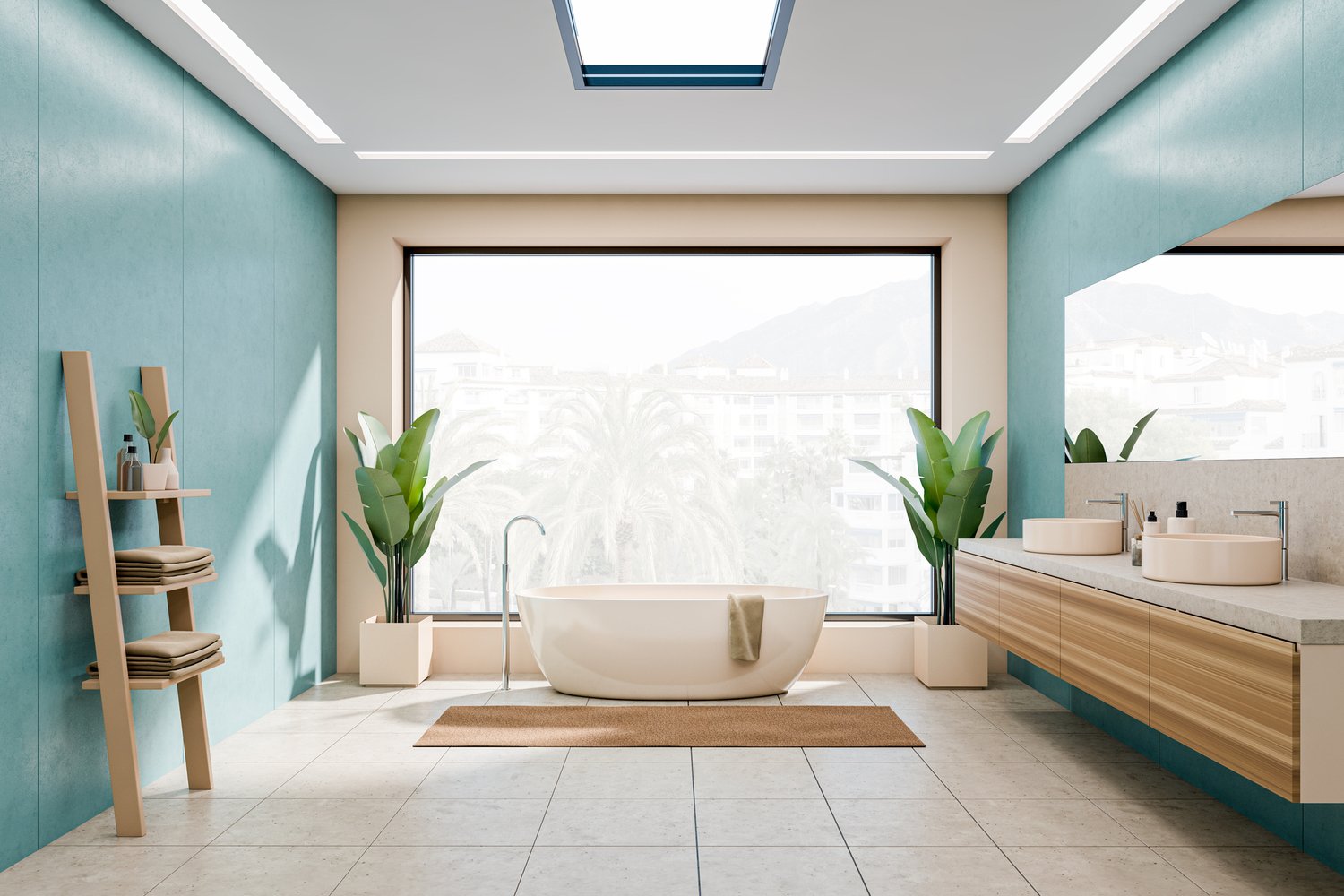Selecting the perfect tiles for your bathroom renovation can be overwhelming given the vast array of materials, sizes, colors, and finishes available today. The right bathroom tiles can transform your space from merely functional to a luxurious retreat while providing essential durability in a moisture-rich environment. This comprehensive guide will walk you through the key considerations when choosing bathroom tiles for both floors and walls, helping you balance aesthetic appeal with practical requirements for this heavily used space in your home.
Understanding Tile Materials
The material of your bathroom tiles significantly impacts both appearance and functionality. Ceramic tiles remain a popular choice for bathroom installations due to their water resistance and affordability. These tiles are manufactured from clay that’s been kiln-fired and often glazed, making them suitable for most bathroom applications. Porcelain, a denser type of ceramic, offers superior water resistance (absorption rate less than 0.5%) and durability, making it one of the best tiles for shower areas where moisture exposure is constant.
Natural stone tiles like marble, granite, limestone, and slate bring organic beauty to bathroom designs but require more maintenance. These materials typically need regular sealing to prevent water damage and staining. Glass tiles create striking visual effects and are completely waterproof, making them excellent for shower walls, though they’re less practical for floor tile bathroom applications due to their slippery nature when wet.
Large-format porcelain tiles that mimic wood or concrete have gained popularity in recent years, offering the aesthetic appeal of these materials without their inherent bathroom limitations. When choosing bathroom tiles, consider not just the immediate visual impact but how the material will perform over years of exposure to water, cleaning chemicals, and daily use.
Size and Layout Considerations
Tile size dramatically affects both the appearance of your space and installation complexity. Traditionally, smaller tiles (1-4 inches) were standard for bathrooms, particularly on floors where their numerous grout lines provided slip resistance. Modern trends have shifted toward larger format tiles (12-24 inches or even larger) that create a sleeker, more spacious feel with fewer grout lines to clean.
For smaller bathrooms, larger tiles can create an illusion of more space, though extremely large tiles may require excessive cutting in compact areas. When planning floor tile bathroom layouts, consider how the tile size relates to the room dimensions. A helpful designer trick is to choose wall tiles that differ in size from floor tiles to create visual interest while maintaining cohesion through complementary colors or finishes.
The layout pattern also influences the room’s perception. Straight lay (grid) patterns are traditional and straightforward, while diagonal layouts can make narrow bathrooms appear wider. Herringbone and other geometric patterns add sophisticated detail but require more material and installation expertise. According to design experts at AskHomey, homeowners should request digital mockups of different layout options before committing to a particular pattern, especially for complex designs.
Finish and Texture for Safety and Style
The finish of your bathroom tiles affects both safety and aesthetics. Glossy finishes reflect light and can make small bathrooms appear larger and brighter, but they become slippery when wet. When choosing bathroom tiles for floor applications, opt for matte, textured, or slightly roughened finishes that provide traction. Many manufacturers now offer specialized slip-resistant ratings, with higher ratings indicating better traction when wet.
For shower floors specifically, small mosaics (2 inches or smaller) remain popular not just for their decorative potential but because their abundant grout lines create natural slip resistance. Penny rounds, hexagons, and small square mosaics are excellent bathroom tile ideas for shower floors that balance safety with style.
Wall tiles can feature more decorative finishes like high gloss, metallic effects, or dimensional textures since slip resistance isn’t a concern. Consider using more elaborate decorative tiles as accent strips or feature walls, with simpler complementary tiles covering larger areas to create visual balance and manage costs.
Maintenance Requirements
Maintenance needs should factor heavily into your tile selection process. Light-colored grout requires more frequent cleaning in high-use bathrooms, while darker grout can conceal soil but may fade over time. Epoxy grouts offer superior stain and moisture resistance compared to traditional cement-based options.
Highly textured tiles and natural stone require more intensive cleaning regimens than smooth porcelain or ceramic. When choosing bathroom tiles, consider not just their appearance on installation day but how they’ll look after years of daily use. Some materials develop appealing patinas over time (certain natural stones), while others maintain their original appearance indefinitely (most porcelains).
Non-porous materials generally require less maintenance and resist mold and mildew better in humid bathroom environments. This makes them particularly valuable for shower installations where moisture exposure is constant and cleaning access may be limited.
Budget Considerations
Bathroom tile costs vary dramatically based on material, size, and quality. Setting a realistic budget before beginning your selection process helps narrow options. Remember that the visible tile is only part of the investment—proper waterproofing, substrate preparation, and professional installation are crucial for longevity in wet areas.
For budget-conscious renovations, consider using special decorative tiles sparingly as accents, with more affordable options covering larger areas. This approach allows for visual impact while managing overall project costs.
For more tips and to connect with reliable home service professionals, follow AskHomey on Facebook and Instagram.



